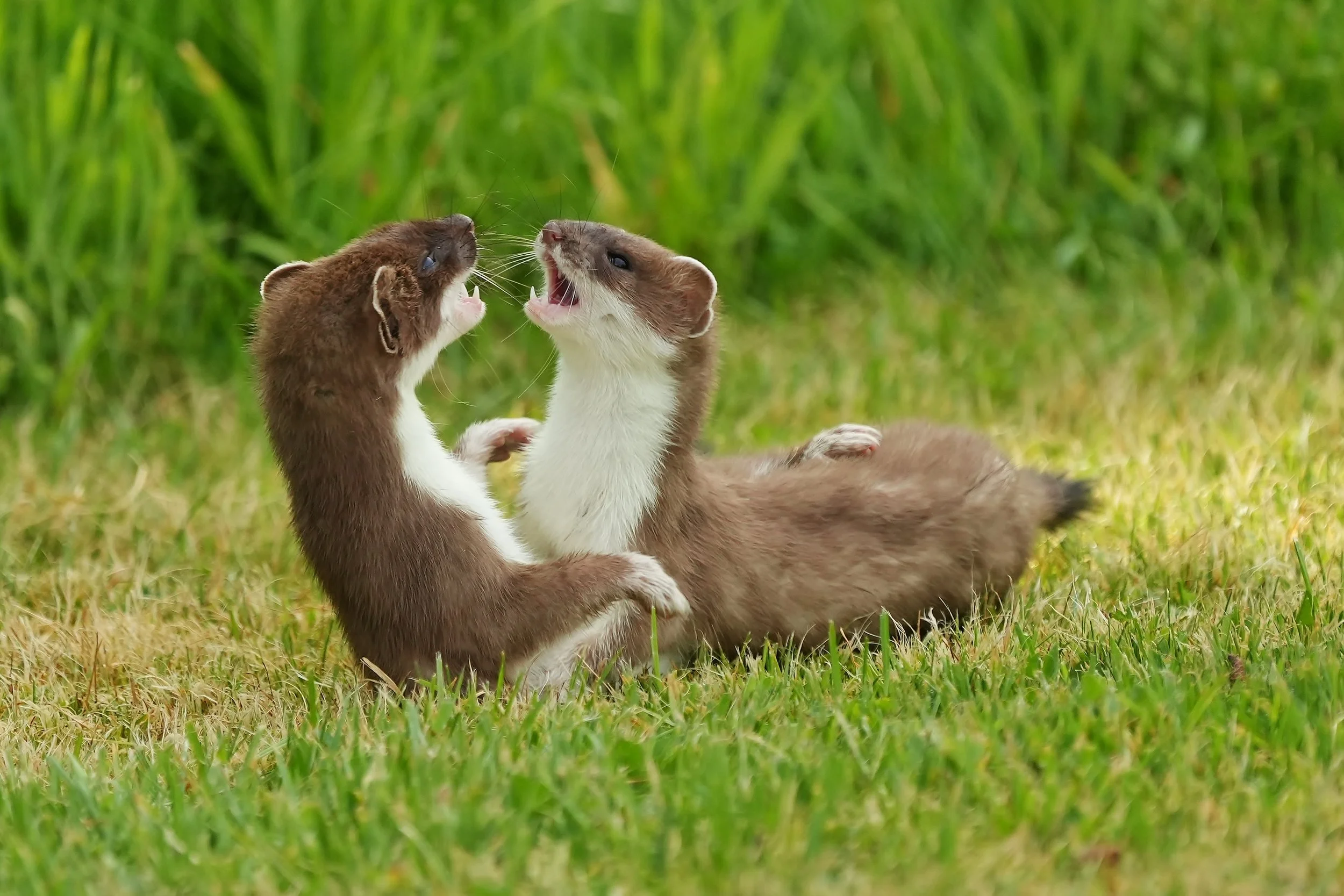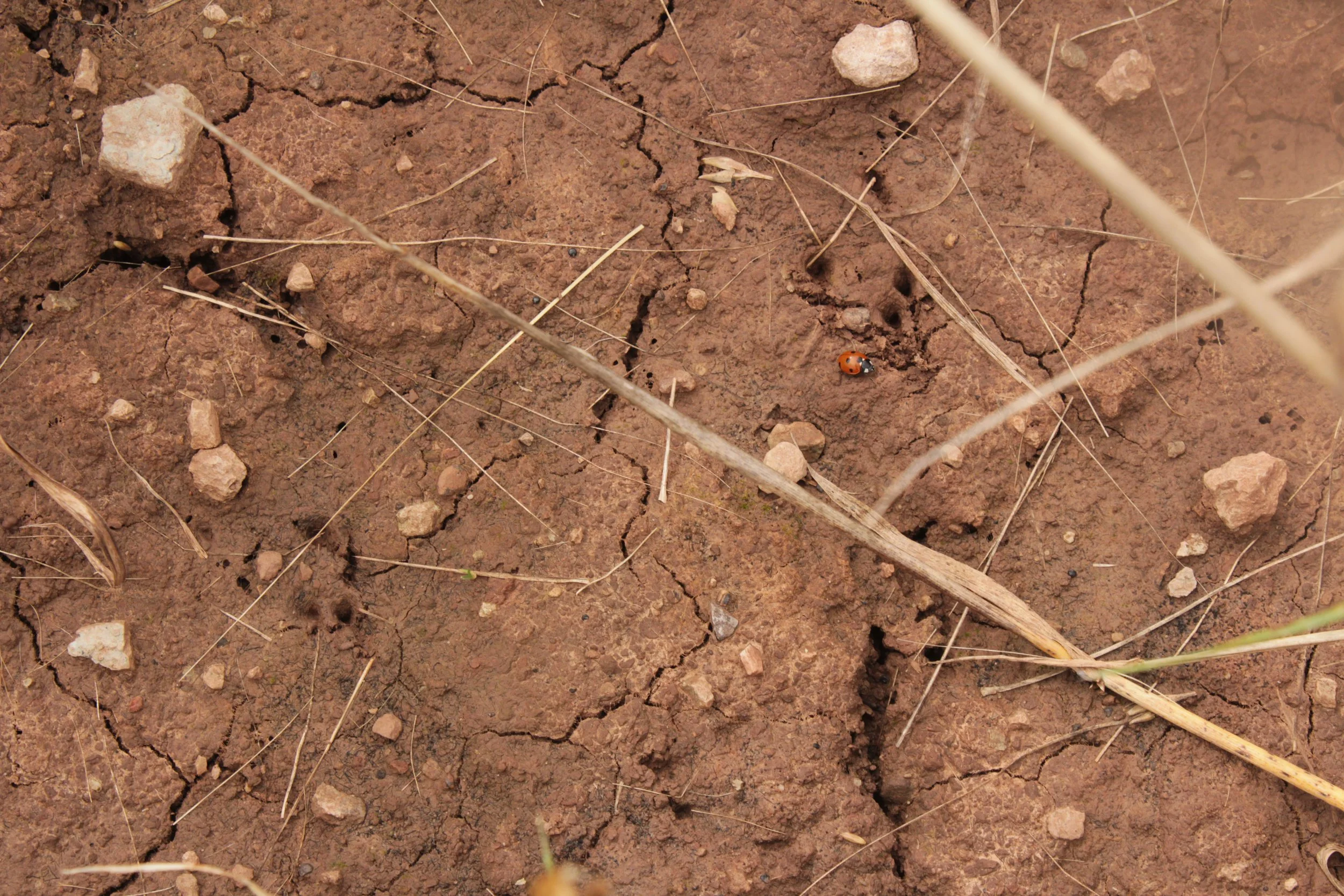Home / British mammals / Stoat
Stoat
Scientific name: Mustela erminea
“The stoats are on guard, at every point, and they make the best sentinels in the world.”
― Kenneth Grahame, The Wind in the Willows
Small but fierce hunters, stoats are long and slender mammals who can become fully or partially ‘ermine’ in the winter to blend in with the snow.
Taxonomy chart
Animalia – Chordata – Mammalia – Carnivora – Mustelidae – Mustela – M. erminea
Conservation status: UK Red List
GB: Least Concern
England: Least Concern
Scotland: Least Concern
Wales: Least Concern
Global: Least Concern
Summary
Diet: Small mammals like rabbits and water voles as well as birds, eggs, fruit and earthworms.
Habitat: Urban and gardens, rivers and wetland, coastal and marshland, deciduous woodland, grassland, mixed woodland, heathland, and arable land.
Size: Males 27.5-31.2 cm, females 24.2-29.2 cm, tails 9.5-14.0cm. Weight: males 200-445g; females 140-280g.
Lifecycle: Females mate in summer and give birth the following spring through delayed implantation to 6-12 young, who become independent at 12 weeks. Lifespan of 5-8 years, though many don’t live beyond 1-2.
Conservation concerns: Gamekeepers and poultry farmers will kill stoats to protect birds through trapping.
Terminology
Delayed implantation: a reproductive strategy where the development of the fetus is slowed down to almost a standstill.
Geography
Stoats occur throughout Britain and Ireland, including offshore islands, though their presence there depends upon prey availability. They are absent from the Isles of Scilly, some Scottish Islands, and the Channel Islands. On some islands, such as Orkney, they are considered invasive non-natives.
They will live in any habitat at any altitude with sufficient ground cover and food, as they don’t like to be out in the open due to the risk of predation from foxes and birds of prey. They tend to hunt along ditches, hedgerows and drystone walls, or through meadows and marshes.
Biology
Male stoats are usually 27.5-31.2 cm and weigh 200-455g, whilst females are 24.2-29.2 cm, weighing 140-280g. The tails are of both males and females are between 9.5-14.0cm.
Stoats have a long slender body with short legs and a medium to short tail with a black tip. Their fur is ginger to reddish brown on top and white to cream below, with a straight line separating the two colours. Some stoats, especially in northern parts of the UK, will turn white or partially white in winter – this is known as ‘ermine’.
Although females (including the year’s kits, which may be only 2-3 weeks old) are mated in early summer, they do not give birth until the following spring, because implantation is delayed for 9-10 months, and active gestation is only 4 weeks. A litter of between 6 and 12 young are then born blind, deaf and barely furred. The female feeds them for up to 12 weeks while the kits are developing into efficient hunters until they are self-sufficient.
Ecology
Stoats are omnivores who will mainly eat small mammals, especially rabbits and water voles where these are abundant. Small rodents are also taken, supplemented by birds, eggs, fruit and even earthworms when food is scarce. They will sometimes hunt underwater and take amphibians and fish.
Stoats hunt along ditches, hedgerows and drystone walls or through meadows and marshes by searching each area systematically, often running in a zig-zag pattern. Drystone walls are especially good for stoats (and weasels) for the cover and hunting opportunities they provide, as they allow stoats to move through and between the stones – as opposed to brick, which doesn't provide cover and acts as an obstacle. All but the largest prey is killed by a single bite to the back of the neck. The nests of former prey are taken over as dens, which may be lined with rodent fur in colder climates. Within its territory, the resident stoat will have several dens, which it uses periodically. Male and female stoats live separately, marking their territories with scent. These animals will defend their territory against intruders of the same sex, but in spring, the males’ system breaks down as they range widely in search of females.
Conservation
Stoats are legally protected in Ireland but not in the United Kingdom. The general licence GL39 allows: “to trap Eurasian stoat to prevent serious damage to livestock including poultry and reared game birds.”
For many years, gamekeepers and poultry farmers have attempted to control stoats, as an animal getting into a shed or pen can kill every bird it catches. Trapping is less intensive than it used to be (stoats were also taken for their skins, especially when in ermine form), but it appears that this had little long-term effect on numbers as natural mortality is usually quite high in stoat populations.
On Orkney, stoats are considered an invasive non-native predator (with no natural predators themselves), and as such have been a threat to the native wildlife of the island, such as Orkney voles, hen harriers, curlews and Arctic terns. They are thus subject to an intense eradication effort.
History
Stoats are native in mainland Britain and have been around since the Late Glacial period, although in some islands they are non-native and recently introduced. They were introduced to Orkney in 2010.
Stoats, alongside weasels, were long associated with witches throughout history and were even believed to be omens of death. Roman natural philosophers claimed their saliva was poisoned, and in Ireland, it was considered unlucky to see a stoat at the start of a journey. In Finland and elsewhere, it was believed that dead stoats could help horses to stay healthy when put in their stables; a stoat carcass from the Tampere Museums, which was acquired from rune singers in the early 20th century, has apparently been used to cure both horses and people – the sellers stated that to do so, small pieces of the carcass had been given to patients mixed in with their food.
More recently in history, in the folklore of Brittany, it was said that if stoats were being hunted, they would rather surrender and die than ruin their white winter ermine coat. The coat of arms and flag of Brittany thus shows a pattern of ermine, which represent purity and the willingness to die rather than give in to lower morals. In Britain, stoats in their ermine form were often seen as markers of royalty, and their furs were worn in the garments of the nobility. For example, there is a portrait of Elizabeth the 1st which shows the queen with a white stoat, possibly emphasizing her purity.
How to identify
Visual: Stoats have brown/red fur, with a white/cream underside and straight line separating the two colours. Their coat may turn fully or partially white in winter. They have a long, slender body with short legs, and a short-medium length tail with a bushy black tip.
Footprints: Stoat tracks are similar to those of the weasel, but larger in size (width 2cm, length 2.2cm). They are five-toed, and most likely to be seen in mud or snow. Stoats are unlikely to walk through a footprint tunnel, and a mink raft is a more commonly used piece of equipment to record their presence. Stoat footprints are similar to American mink footprints.
Droppings: All droppings, like other carnivores, are deposited singly and are narrow with twisted ends. They are longer and thicker than weasel droppings (40-80mm long and 5mm thick). They often contain hair and bits of bone and are blackish brown as well as musky.
Recommended reading
https://www.orkneynativewildlife.org.uk/project/stoats-in-orkney
Frequently asked questions
-
Yes, stoats can attack and kill chickens, especially smaller breeds. To keep chickens secure, it is best to put them in a coop overnight and make sure there aren’t any holes where they could enter.
-
There is a theory that stoats can ‘hypnotise’ rabbits by leaping and thrashing in order to get close enough to strike. Jumping around causes the rabbit to freeze in a stress state and not flee because it is unable to predict where the stoat will attack from and therefore how to respond, which may even confuse the rabbit into thinking there are multiple predators. However, there are also other theories behind this behaviour, such as that it is linked to parasites.
-
Yes, stoats can swim well. As opportunistic predators, some stoats will hunt in and around water, adding fish and amphibians to their diet.
-
Stoats may turn partially or fully white in winter – thus becoming ‘ermine’ – to camouflage better with snow.
Confusion species
Weasel (Mustela nivalis)
Weasels are smaller than stoats – their heads can fit through a wedding ring, while stoats’ heads can’t. Weasels also do not have a thick black tip at the end of their tails, which are shorter than those of stoats, and their whole tails are ginger to russet brown. They also have an irregular, wavy line separating their top and underside colours – and sometimes their white undersides have specks or spots – whilst stoats have a neat line between their top and underside colours.
Identify tracks
Found some animal tracks but not sure what kind of animal they belong to?
Identify sounds
Heard a curious animal sound but no idea whose making it?
Wildlife identification FAQ
Still not sure what you’ve found? Head over to our FAQ for an answer.





